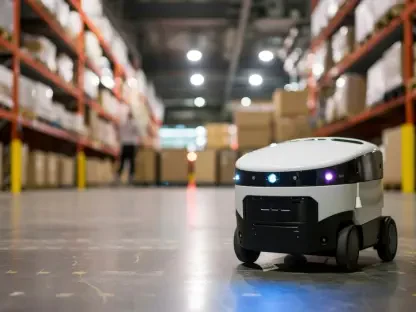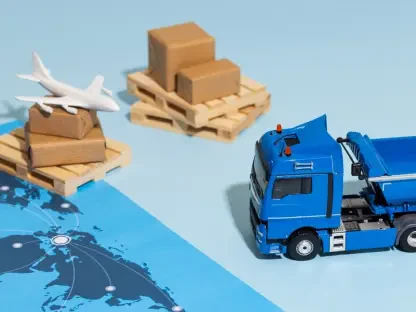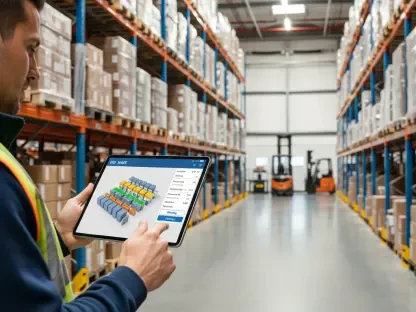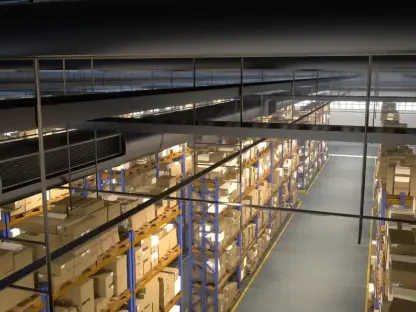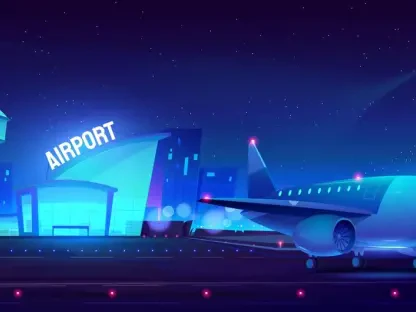Amid increasing environmental concerns and the push towards sustainable transportation, the Port of Rotterdam Authority and Swietelsky Rail Benelux B.V. have embarked on an ambitious project to enhance rail freight infrastructure. This initiative centers on the construction of a new rail track bundle consisting of six tracks designed for 740-meter-long trains. Commencing in the spring of 2025 and expected to be operational by mid-2027, the project seeks to alleviate current capacity constraints and meet the growing demand for rail freight transport from Maasvlakte to the European hinterland.
Enhancing Capacity through Strategic Infrastructure
Recognizing the critical role that rail transport plays in reducing environmental footprints, the Port of Rotterdam Authority has strategically planned this development within the broader Maasvlakte-Zuid railway yard project. The project is being executed in close collaboration with ProRail, the Dutch railway infrastructure agency, and benefits from a European Connecting Europe Facility (CEF) subsidy. By augmenting rail capacity, the initiative aims to significantly reduce road congestion and its associated environmental impact.
Addressing Capacity Constraints
With the construction of the new rail track bundle, the Port of Rotterdam aims to facilitate an additional 6,750 train movements annually. This dramatic increase in capacity has the potential to replace approximately 675,000 truck journeys each year, easing pressure on road transport networks and contributing to a reduction in CO₂, NOₓ, and particulate matter emissions. Such environmental benefits align with the EU Green Deal’s ambitious targets of reducing transport emissions by 55% by 2030 and by an impressive 90% by 2050.
A significant focus of this initiative is its contribution to the Port of Rotterdam Authority’s Climate Agreement commitment. The project aims to cut CO₂ emissions from hinterland and continental transport by 30% by 2030, reinforcing the port’s role as a leader in sustainable logistics. The targeted completion date in mid-2027 signals a prompt response to these pressing environmental and capacity challenges, positioning the Port of Rotterdam as a pivotal hub in Europe’s greener transportation network.
The 2050 Port Rail Logistics Vision
The concerted effort to expand rail capacity is documented extensively in the 2050 Port Rail Logistics Vision, a strategic blueprint co-developed by the Port of Rotterdam Authority and ProRail. This vision addresses future capacity issues on the Port Railway line and outlines comprehensive remedial actions aimed at enhancing and optimizing the rail infrastructure sustainably. Among the scheduled infrastructure projects up to 2040 are the modification of the C2 curve and further electrification of the Port Railway line.
Such initiatives are meticulously planned to increase the Maasvlakte’s rail accessibility and streamline logistics processes, ensuring that the Port of Rotterdam can effectively handle growing cargo volumes while minimizing environmental impact. These developments reflect a proactive approach to future-proofing the port’s logistics capabilities, driven by a commitment to sustainability and operational efficiency.
Collaborative Efforts and Environmental Commitment
The significance of this rail expansion project extends beyond capacity enhancements. It underscores a collaborative framework that brings various stakeholders together to achieve common goals. Swietelsky Rail Benelux B.V. and ProRail’s involvement highlights the synergy between public and private entities in tackling logistical and environmental challenges through innovative solutions and shared objectives.
Partnerships and Funding
Securing a subsidy from the European Connecting Europe Facility (CEF) underscores the strategic European interest in sustainable transport infrastructure. The CEF aims to support projects that enhance connectivity across Europe while promoting environmentally friendly modes of transport. By partnering with key stakeholders and leveraging European funding, the Port of Rotterdam Authority exemplifies a strategic, environmentally conscious approach to modernizing logistics infrastructure.
Meeting Stringent Climate Goals
Commitment to meeting stringent climate goals is a crucial element of the Port of Rotterdam Authority’s strategy. The focus on rail transport is part of a broader vision to align with the EU Green Deal’s climate objectives. The planned infrastructure developments not only aim to increase capacity and efficiency but also significantly reduce harmful emissions. This multi-faceted approach positions the port as a frontrunner in adopting sustainable practices, driving forward the transition to greener logistics and contributing to the reduction of the carbon footprint associated with freight transport.
Conclusion
With rising environmental concerns and the growing emphasis on sustainable transportation, the Port of Rotterdam Authority, along with Swietelsky Rail Benelux B.V., has launched an ambitious project to upgrade the rail freight infrastructure. This initiative focuses on building a new rail track bundle that includes six tracks specifically designed for 740-meter-long trains. The construction will begin in the spring of 2025 and is projected to become operational by mid-2027.
The primary goal of this project is to address current capacity constraints and accommodate the increasing demand for rail freight transport from Maasvlakte to various European destinations. This endeavor aims to make rail freight transport more efficient and eco-friendly, contributing to broader environmental goals. By enhancing the rail infrastructure, the Port of Rotterdam intends to bolster its role as a key logistics hub in Europe while supporting the modal shift from road to rail, thus reducing the carbon footprint associated with freight transportation.


